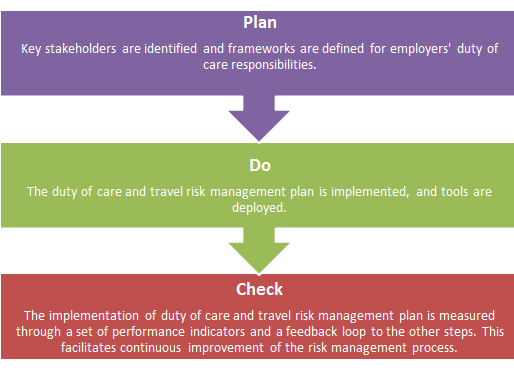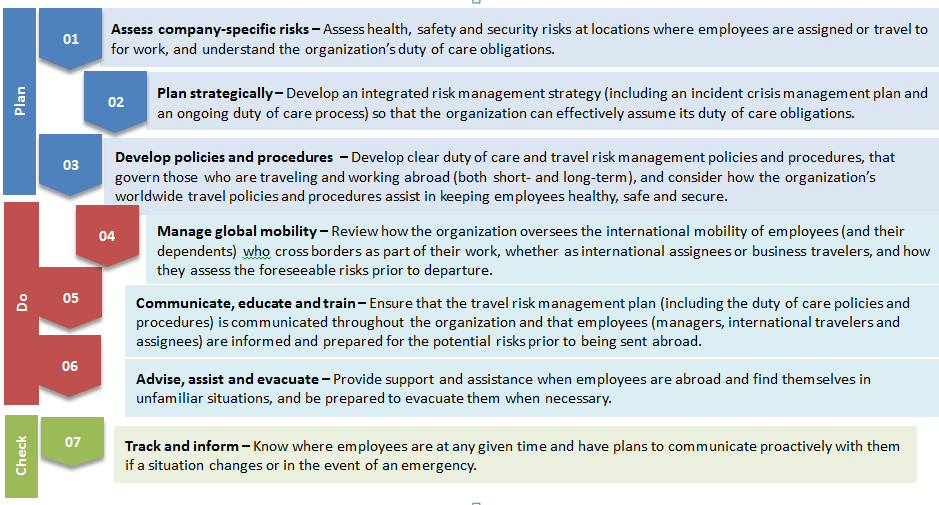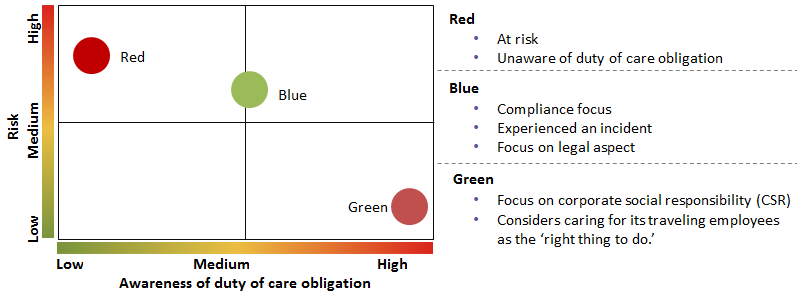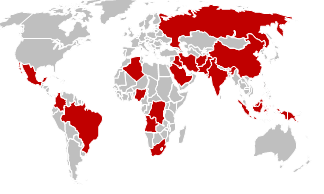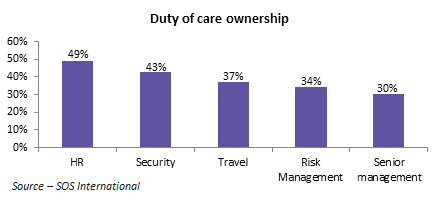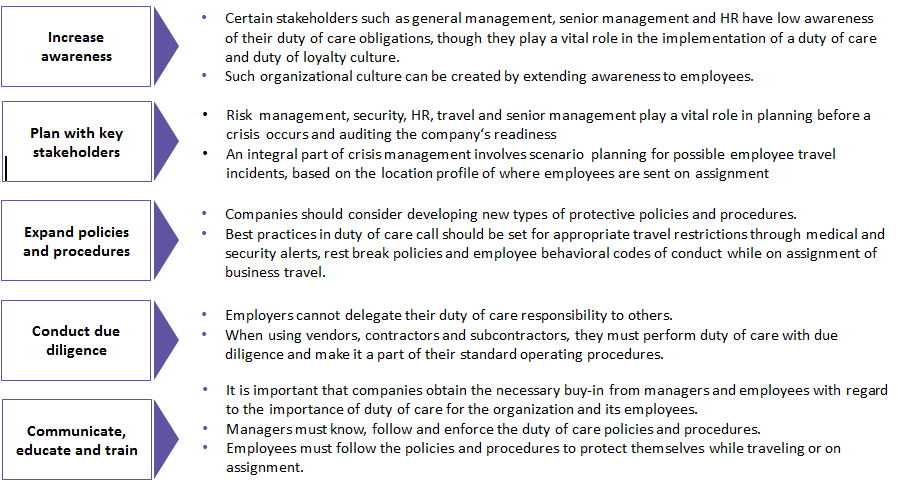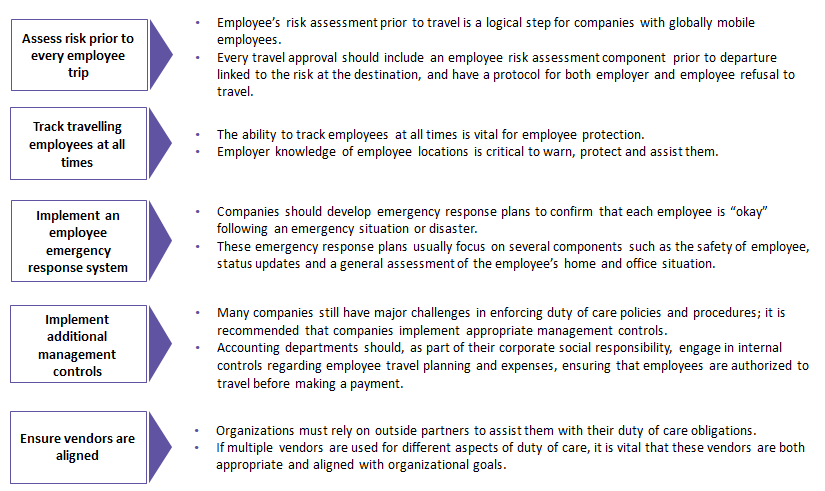
Duty of care helps protect employer and employee interests

Abstract:
Today, given the global nature of business operations and supply chains, international business travel has increased greatly. At times, employees may have to travel to places prone to political turmoil or regions where there is social and economic instability. Such travel may increase the risk factor for employees.
Businesses have a corporate duty of care and a legal requirement to prepare their employees for travel and support them during and after their trips. If this is not robustly demonstrated or carried out, then the consequences for individual employees and the company as a whole can be severe, resulting in legal proceedings and reputational damage which ultimately impacts profits.
This article will provide insights on the threats and risks associated with business travel and the role that duty of care plays in safeguarding the employees. It explains in detail:
- Importance of duty of care
- Different stages in duty of care risk management model
- Employer duty of care continuum and three zones in it
- Perceived high-risk locations in which global companies operate
- Risks and threats faced by employers
- Awareness and ownership of duty of care and travel risk management
- Duty of care best practices
Introduction
Business travel and international operations are part of every multinational corporation’s daily operations. The health, safety, and security risks of traveling employees are easy to underestimate and overlook. With the implementation of duty of care laws around the world, multinational corporations must carefully develop and analyze their travel programs to be sure they fulfill their duty of care for all employees.
What is duty of care?
Duty of care refers to the moral and legal obligations of employers to their employees, contractors, volunteers and related family members in maintaining their well-being, security and safety while working on international assignments or working in remote areas of their home country.
Importance of duty of care
- Simplifies and removes inconvenience – Duty of care helps to simplify the travel and remove inconveniences; thereby making it easier for employees to get the work done.
- Best way to retain staff – The best way to look after employees and retain them is by having duty of care in place.
- Efficient solution when pitching into a new market – Simple solutions of duty of care become efficient when a company ventures into a new market where employees need to travel to complex destinations.
- Avoids legal ramifications – Making sure an organization has a proactive, comprehensive duty of care program is essential to avoid legal ramifications in case of unfortunate incidents.
Different stages in duty of care risk management model
The various steps of each phase of the integrated duty of care risk management model are illustrated below
Employer duty of continuum – Three Zones
Not all employers have the same level of risk exposure and global experience when it comes to protecting the health, safety, security and well-being of their globally mobile employees. Risk exposure varies according to the work performed, the type of industry, the profile of the employee and the locations where they operate. In addition, cultural norms and laws that guide companies in taking care of their employees vary widely around the world. As a result, employers find themselves in different places on the employer duty of care continuum.
The continuum is an ideal representation of an organization’s position vis-a-vis their duty of care responsibilities. Three zones are identified (red, blue and green) through which organizations typically evolve.
|
Red Zone |
Blue Zone |
Green Zone |
|
|
|
Primary perceived high-risk employee locations
- Risks and threats that present danger to the health, safety and security of employees are largely influenced by a country’s political, economic, social and environmental context where employees work, travel or are sent on assignment.
- The top five countries perceived as dangerous are Mexico, Nigeria, Afghanistan, India and Pakistan.
The top 25 countries indicated in red on the world map are clearly perceived as more high risk than others due to their extreme political, economic, social and environmental situations.
|
High risk employee locations |
|
||||
|
5. Pakistan |
9. Democratic Republic of the Congo |
13. Philippines |
17. Vietnam |
|
|
6. Iraq |
10. Indonesia |
14. Russia |
18. Algeria |
|
|
7. Papua New Guinea |
11. South Africa |
15. Iran |
19. Colombia |
|
|
8. China |
12. Angola |
16. Brazil |
20. Saudi Arabia |
|
Risks and threats faced by employees
- Companies perceive risk exposure to the health of their employees higher than the threats posed by natural and human-made disasters. Road accidents are a major concern and the number one reason for medical evacuation of employees.
- Threats can be categorized into seven types:
- Political unrest
- Environmental factors
- Natural disasters
- Illness, disease and lack of medical care
- Terrorism, violence and crime
- Accidents
- Travel-related incidents
The specific risk patterns based upon company headquarter locations are:
|
Australia/Oceania –perceive the risk of kidnapping, hijacking and piracy to be significantly lower, because these places are generally considered safe. |
|
Asia and Africa – Asia perceives the risk of natural disasters (such as earthquakes, hurricanes, typhoons, tsunamis and even ash clouds) to be higher than companies headquartered in Europe and Sub-Saharan Africa, since these disasters occur frequently in the Asian region. |
|
Europe and North America – These places are more concerned about remoteness and rural isolation, which may also be related to the nature of some of their industries—extraction, construction and NGOs. |
Ownership of duty of care
The two critical success factors to implement an integrated duty of care strategy within a company are:
- Awareness
- Ownership of the responsibility (Effective deployment can take place).
The primary ownership of duty of care should be from HR, security, senior management, travel and risk management, although HR has the key ownership with regard to duty of care.
Duty of care best practices
Each company has varying demographics and unique challenges. Adopting the best practices helps the companies to be better equipped to deal with their duty obligations and plan effectively. The following set of recommendations for companies are based on best practices.
Case Example
An automobile major protects its travelers by enforcing protective policies and procedures and by implementing additional management controls.
Challenge: The company’s air volume nudged upward from $57.2 million in 2013 to $57.8 million in 2014. Increased travel to the Middle East and Africa called for a more comprehensive safety and security program for travelers.
Solution: The company refined its pre-trip approval process and with the help of multiple vendors it deployed a global platform that had stringent duty of care policies ensuring traveler’s safety. The company also considered other best practices such as ‘implementing additional management controls’ and ‘ensuring vendors are aligned’ to guarantee the safety of travelers.
Conclusion
Companies are generally aware of the countries that their employees travel to for business. They usually require employees to book their travel through approved travel agencies and are likely to provide employees with a 24-hour assistance number. Companies can have a partnership with vendors such as ANVIL Group and BCD travel to ensure travel and security are in right place. Implementing the basic front-end activities are fundamental requirements to engage in vital duty of care activities such as assessing risk (initial and changing), tracking employees, advising them of changing conditions and assisting them when needed.
Employers should remain vigilant of their legal and corporate social responsibilities related to their duty of care, both domestically and internationally. Proper planning and buy-in from all levels of the organization are critical to deploy an effective duty of care program.
Related Insights:
View All
Get more stories like this
Subscirbe for more news,updates and insights from Beroe
